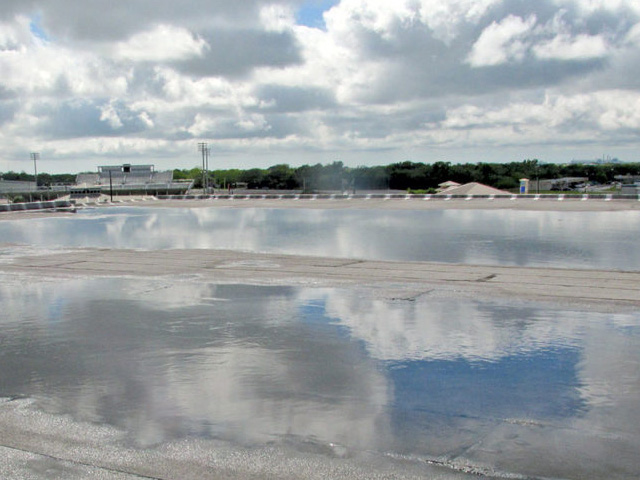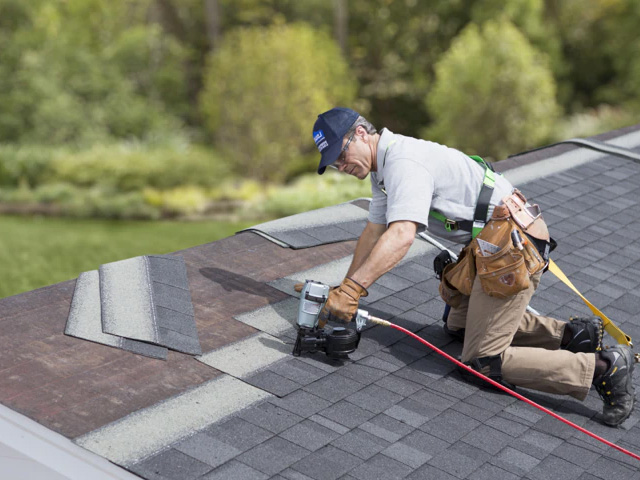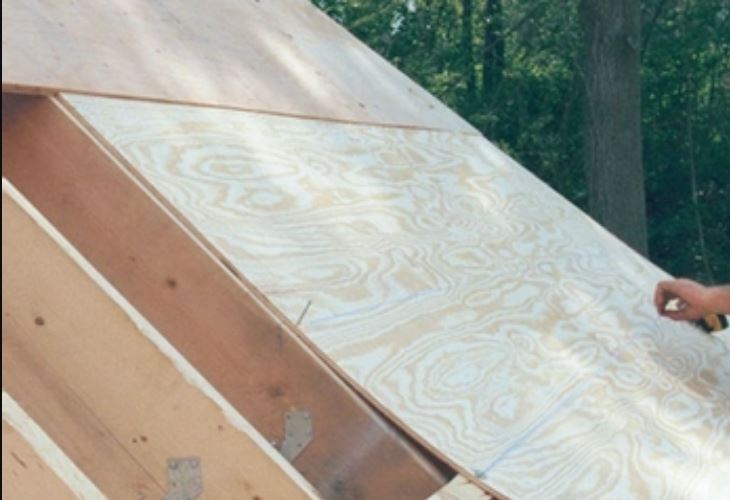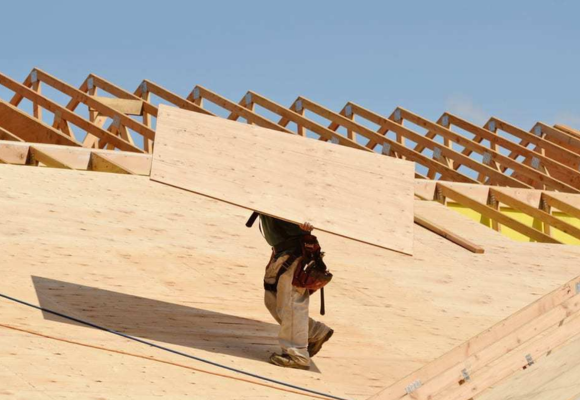Calling upon a roofer to replace the damaged plywood seems the ultimate fix, and when you hire a roofer to repair or replace your roof, you expect them to do a good job.
But what if your roofer neglects to fix the plywood beneath your shingles? Or what if your roofer did not replace the plywood? Unfortunately, this frequent issue often goes undiscovered until it is too late.
Your home is subject to rain, wind, and other external factors that can cause catastrophic damage to your property if it lacks a solid roof.
Old or damaged plywood can jeopardize the structural integrity of your roof, resulting in a slew of costly issues down the road.
The Roofer Did Not Replace the Plywood
If the roofer fails not to repair damaged plywood during your roof replacement, it might have severe consequences for your property’s structural integrity and general safety.
Issues like Sagging, water damage, and rotting are all signs of plywood deterioration. Upon finding these indications, call the roofer immediately and document your concerns with evidence.
If the roofer does not answer, you can file a complaint with your State Contractor’s Licensing Board. You might also hire another professional to inspect the damage and get roof repair.
Remember to maintain and check your roof correctly to extend the life of your plywood roof decking.

What Is Plywood, and Is it Worthy to Opt-In Roofing?
Plywood is a robust and durable building material frequently used in roofing due to its strength, water, and weather resistance properties that last 20 to 40 years.
It ensures your roofing stays fixed and firm and avoids getting easily damaged due to environmental factors or weather stress.
Plywood is often constructed using numerous thin layers of wood bonded together in a cross-grain pattern, ensuring a robust and stable board.
Over time, the plywood on the roof deck may be prone to water damage, mold growth, or cracks, requiring roof replacement.
But before that roof needs to be examined for water damage or decay before considering a roof replacement. If any damage is discovered, the roofer is contacted.
The roofer would repair the plywood to ensure that the roof has a firm base and can withstand the weight of the shingles and any prospective load on top of the roof.
But what if the roofer did not replace the plywood?
When to replace your plywood?
-
Check out the factor to determine whether you require a roofer for plywood replacement. The maximum factors would make you contact a roofer to replace the plywood to prevent further damage.
The issues include Severe water leakage.
- Weakened granules
- Damaged shingle due to adhesive wearout
- Loss of structure smoothness
- Sunken dips
- Elevated swellings
- Moisture entrapment
- Loss of ventilation
- Poor moisture eradication
- Old roofing
Damaged Roof Decking- Warning Signs
It is critical to recognize the warning signs of damaged roof decking. Some may include:
- Water leaks from the attic
- A drooping ceiling
- Swollen paint
- Unattractive stains on the ceiling
- Indicators of seepage
Our Advise
According to the National Roofing Contractors Association (NRCA), a user must inspect its roofing or deck 2 times a year.
Do this in the Autumn And Spring to find out any Unresolved roofing concerns, as ignoring them might appear to multiply and deteriorate with time, becoming increasingly severe and inflicting more damage.
Users can identify roof problems or get them repaired by consulting a professional roofer.
How To Identify If Your Plywood Is Damage?
Damage to plywood can be difficult to detect during a roof replacement since it is frequently found beneath the present shingles. But wait!
No worries; we Here enlisted a few warning signals to look out for damaged plywood because, at times roofer might have done his job but not replaced the damaged plywood.
So, for that, these points will help you out!
A. Sagging
If the roof looks to be sagging, the main reason is that the plywood beneath the shingles deteriorated and was not replaced.
B. Water damage

If you find indications of water damage, leakage, discoloration, or staining, It may indicate that the plywood beneath is decaying or damaged and is not replaced.
C. Rotting
Plywood rooting can be a real headache, and most commonly, you would come across the following:
- Wet rot
- Dry rot
Both of them affect the plywood integrity. Detecting the problem can stop you from suffering catastrophic repercussions.
So, what are the warning indicators you should be looking for?
- Check for discoloration
- Mushroom-like growths
- Unpleasant and damp odor
- Crumbles and wood cracks
- You may also detect black stains and sponginess to the touch of the wood.
Be wary of rot spreading to other wooden components of your home and insulation degradation, which can drastically lower your energy efficiency.
D. Mismatched shingles
What If you found that the new shingles are not identical or match the old ones? That is because the roofer did not repair the damaged plywood.
What Happens If the Roofer Does Not Replace The Plywood?
Despite your roofing longevity, at times, there would be a need to consult an expert roofer to have a roofing checkup or investigate damage to be troubleshot.

Upon hiring an expert roofer to fix your roof, you want them to complete a job that includes replacing damaged plywood.
Still, only some roofers are expert enough or local enough to make you identify your issues and fix them; some may need to pay more attention to some project components.
And that makes users stuck in cases. Suppose the roofer fails or does not replace plywood during your roof replacement. In that case, it might significantly impact your house or property’s structural integrity and general safety.
In case your roof was damaged and after completing the project, you in out that the roofer did not replace plywood during your roof replacement, you could face several problems, including:
A. Loss of structural integrity
Plywood is an essential component of the roof deck and gives structural support to the overall roof system.
When broken plywood is not replaced, the roof’s structural integrity is jeopardized, making it more susceptible to damage from high winds, heavy snowfall, or other weather phenomena.
B. Water leakage
At times, water might be dripping from the roof, which is why when the plywood is moisture or water-damaged and causes leakage.
In general, the damaged or decaying plywood can allow water to seep through, resulting in leaks, and those leaks might make your roof even more vulnerable to damage if not replaced.
Even a minor leak can cause extensive damage if plywood is not replaced over time, resulting in mold, mildew, and other problems.
So, if the roofer didn’t replace the plywood, the situation would get more severe and cost you additional charges in future repair, so do check and hire an expert who has previously rated best for his services.
C. Poor Aesthetics
What if the roofer does not replace the damaged plywood?
With real negative consequences, the roofing will also not appear elegant, instead making a dull and damaged appearance, causing a waste of your money on a poor roofing expert.
A roof with apparent damage or protruding nails is an eyesore and reduces your house’s curb appeal and ultimate value.
D. High Repair Costs
If you uncover problems due to faulty roof repairs or poor roofing experts, you may need to have more repairs performed in the future.
The roof might need to be entirely replaced because of severe lay-damaged plywood.

It might result in unforeseen charges you were not expecting and are always a burden on your pocket.
So that’s why hiring a roofer makes a close deal with all the relevant job factors you want him to complete during the project.
What To Do If The Plywood Not Get Replaced?
If you found shingles mismatching, roof leakage, or loss of roof integrity, the roofer did not replace damaged plywood during your roof replacement. But what to do?
Any ideas? Keep calm and take a deep breath because we brought you specific information that can make you take the following actions to resolve the problem.
Let’s check out what legal steps you can take against the roofer for not fully fling the job and doing fraud with you.
1. Immediately Contact The Roofer
Upon finding the roofer fraud, you only need to contact and make him answerable for what he did and how he would fix it now. Your initial action should be getting him.
Ensure you document your concerns with the roofer who conducted the service to explain why he didn’t replace the plywood.
If the roofer disagreed, you could provide photographs and any other evidence that the plywood was not replaced or evidence of damage like leakage or mismatched shingles.
If the roofer is polite enough to accept the mistake, ask him for the repair. Ensure the roof is inspected correctly this time and troubleshoot with significant fixation.
2. Complaint to state contractor’s licensing board or Better Business Bureau
Check out the factors and take action legally!
- If the roofer isn’t accepting calls
- If the roofer does not accept its mistake
- If the roofer fails to remedy the issue
If above said scenarios fit your case, you can submit a complaint with the Better Business Bureau or your State Contractor’s Licensing Board to take legal action against the roofer and make him answerable for the fraud work.
3. Consult an expert
Those not trusting the previous roofer can also hire another trustworthy professional to evaluate your roof and determine the extent of the damage and whether repairs are required.
But remember, additional cost has to be paid if going with another expert.

How Long Will Plywood Last As Roof Decking?
The longevity of your plywood as a roof decking is usually determined by several factors, including the plywood’s quality, exposure to moisture, sunshine, maintenance, and weather conditions.
In general, if the plywood is of excellent quality and well preserved or is timely maintained and ventilated, it can survive for 20 to 40 years.
However, if exposed to dampness, harsh weather conditions, mold growth, and poor maintenance, it may deteriorate faster in its longevity periods and need to be replaced sooner than required.
Ensure you get Proper maintenance, frequent roof inspection, and early resolution of any concerns like leakage or mold growth to enhance the life of plywood as roof decking.
Final Thoughts
Roof replacement may be an expensive investment. Therefore, the project must be done correctly.
If your roofer did not replace plywood during the roof replacement, it could provoke significant problems such as loss of structural integrity, more frequent water leaks, and additional expenditures.
If you believe your roofer failed to replace damaged plywood, contact them and document your concerns.
If they fail to resolve the issue or you are dissatisfied with their response, seek expert advice and consider filing a complaint with a regulatory agency.
Take general precautions to guarantee your house and roof safety for extended periods.

Arthur is a skilled roof worker with over 10 years of experience in the industry. He started his career as an apprentice and worked his way up to become a foreman.
When he’s not working on roofs, John enjoys with his family or writing posts. He is also a passionate cyclist.

